This affordable apartment building embodies its predecessor’s mission.
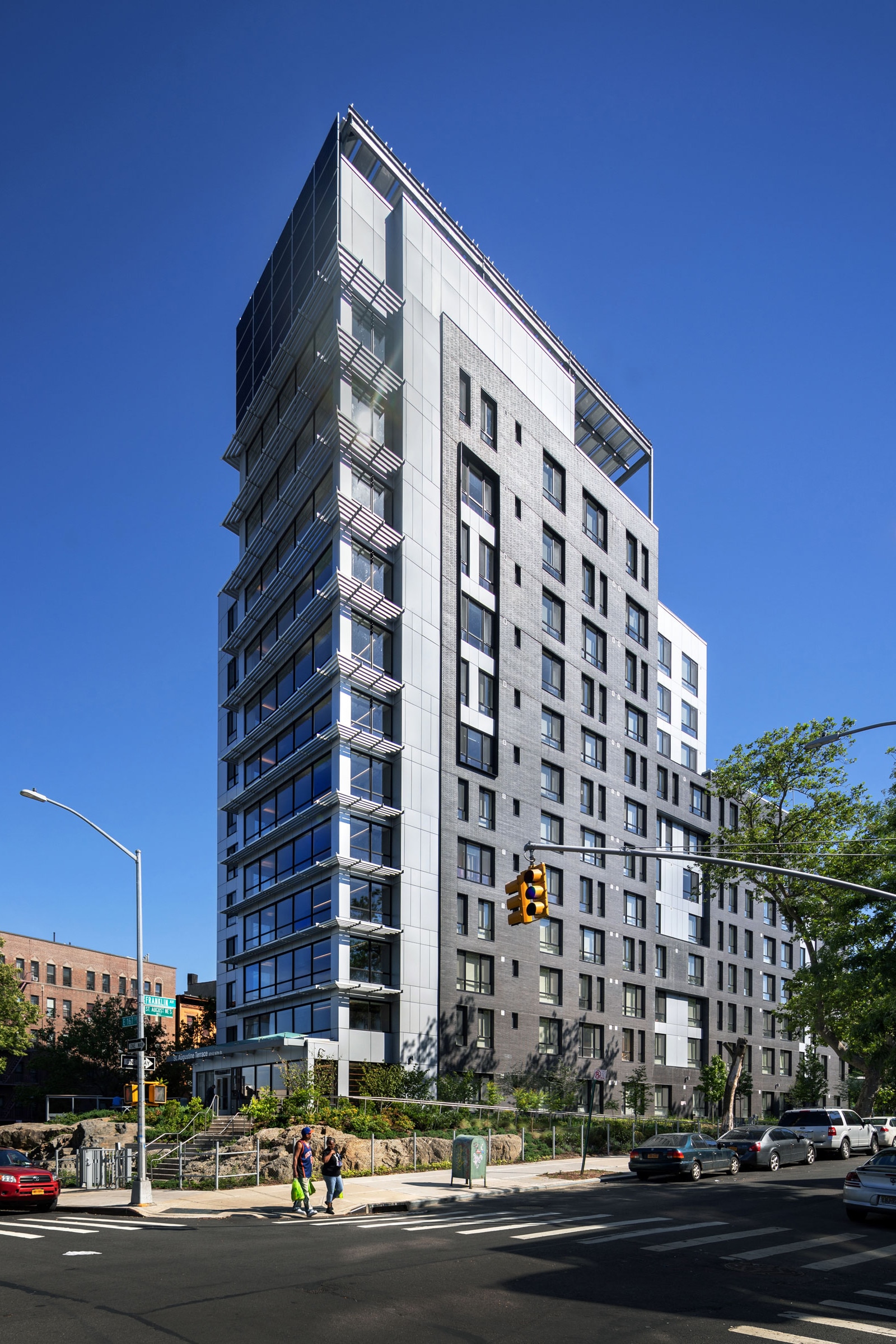
Photo by David Sundberg/Esto
Built at the location of a demolished, revered church, St. Augustine Terrace exudes light and celebrates the site’s history as a modern landmark in The Bronx. Catholic Homes New York, a mission led by Catholic Charities and the Archdiocese of New York, planned for this supportive and affordable apartment complex to pay homage to its predecessor, both through its purpose and design.
In building St. Augustine Terrace to be LEED Gold–certified, Magnusson Architecture and Planning (MAP) wanted to integrate sustainable requirements. “The longevity of this building and supporting that mission is part of why we try to think of it as a whole building, as opposed to a checklist,” says Rachel Simpson, senior associate at MAP.
St. Augustine Terrace’s 12 floors offer 112 one- to three-bedroom units, one- third of which are reserved for adults with mental illness. For these tenants, and any other residents in St. Augustine Terrace, in-house Beacon of Hope workers provide various support services. Their on-site offices, and their mission, are reflected in the building’s integrated sustainable design elements.
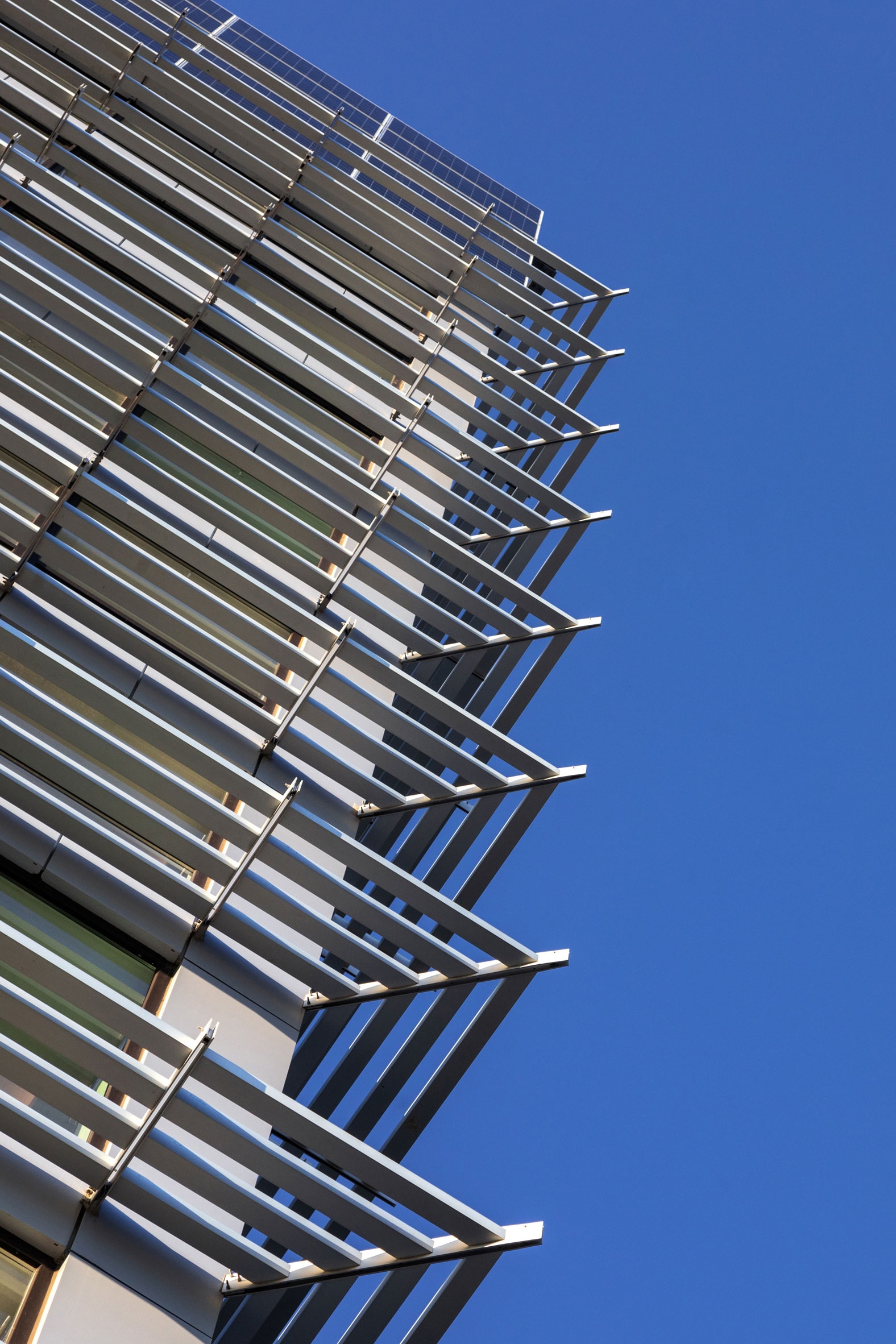
Photo by David Sundberg/Esto
Solar shades positioned outside at floor level shield the elevator lobbies from the sun to help control the building’s temperature. But they serve more than one purpose. “They help extend the floor visually out to help you feel secure and sheltered in that space. It’s a nice part of that integrated design concept,” says Rachel Simpson, senior associate at MAP.
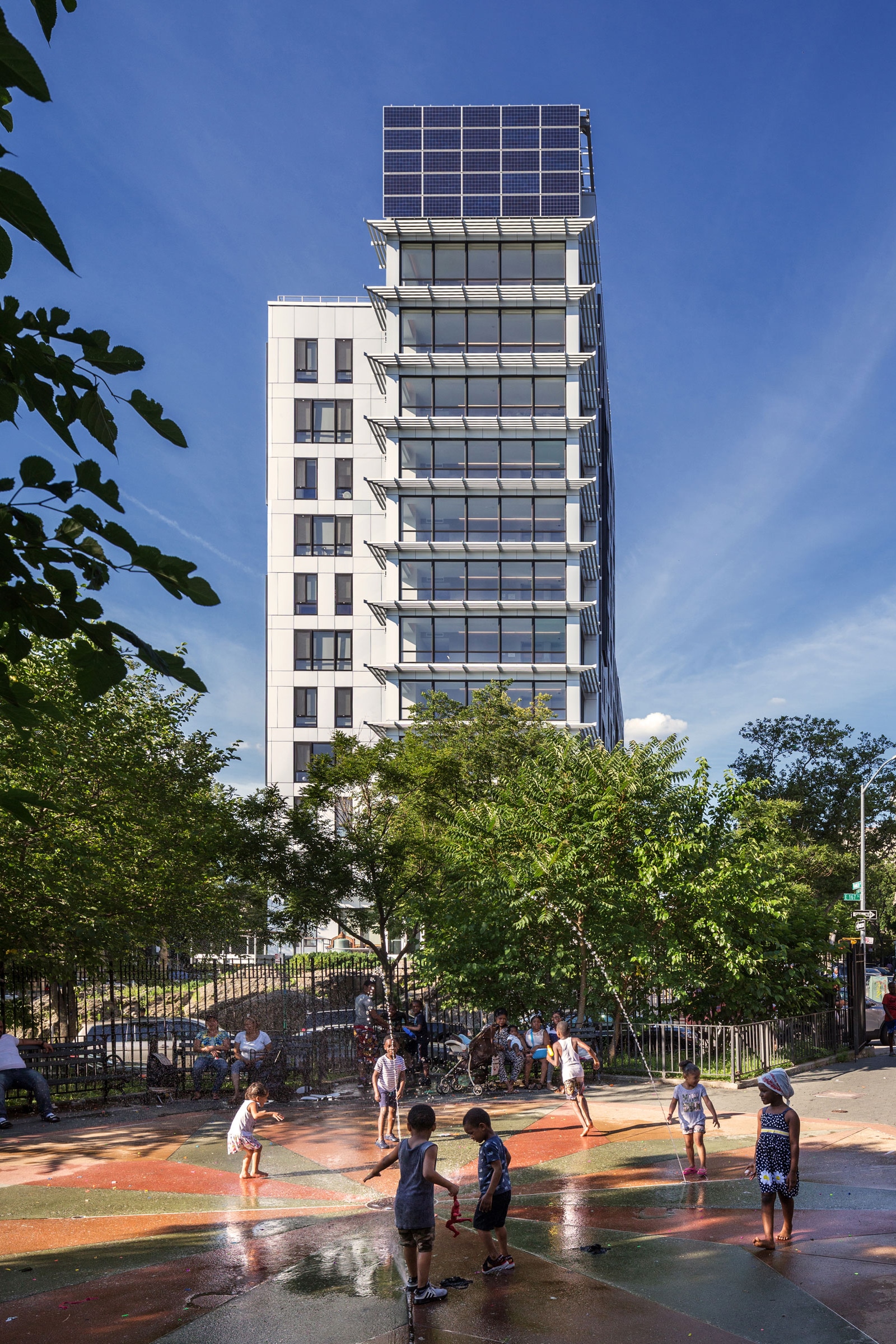
Photo by David Sundberg/Esto
St. Augustine Terrace is integrated into the surrounding public areas as it’s next to a park and playground, further engaging the community around it. But it’s simultaneously removed from the bustling city as it’s also on elevated ground. The building rests in the middle of the block and has a landscape buffer between it and the street on three sides. Stairs rise up from the sidewalk, leading to the apartment’s entrance almost a floor above the street and reflecting its importance in the community.
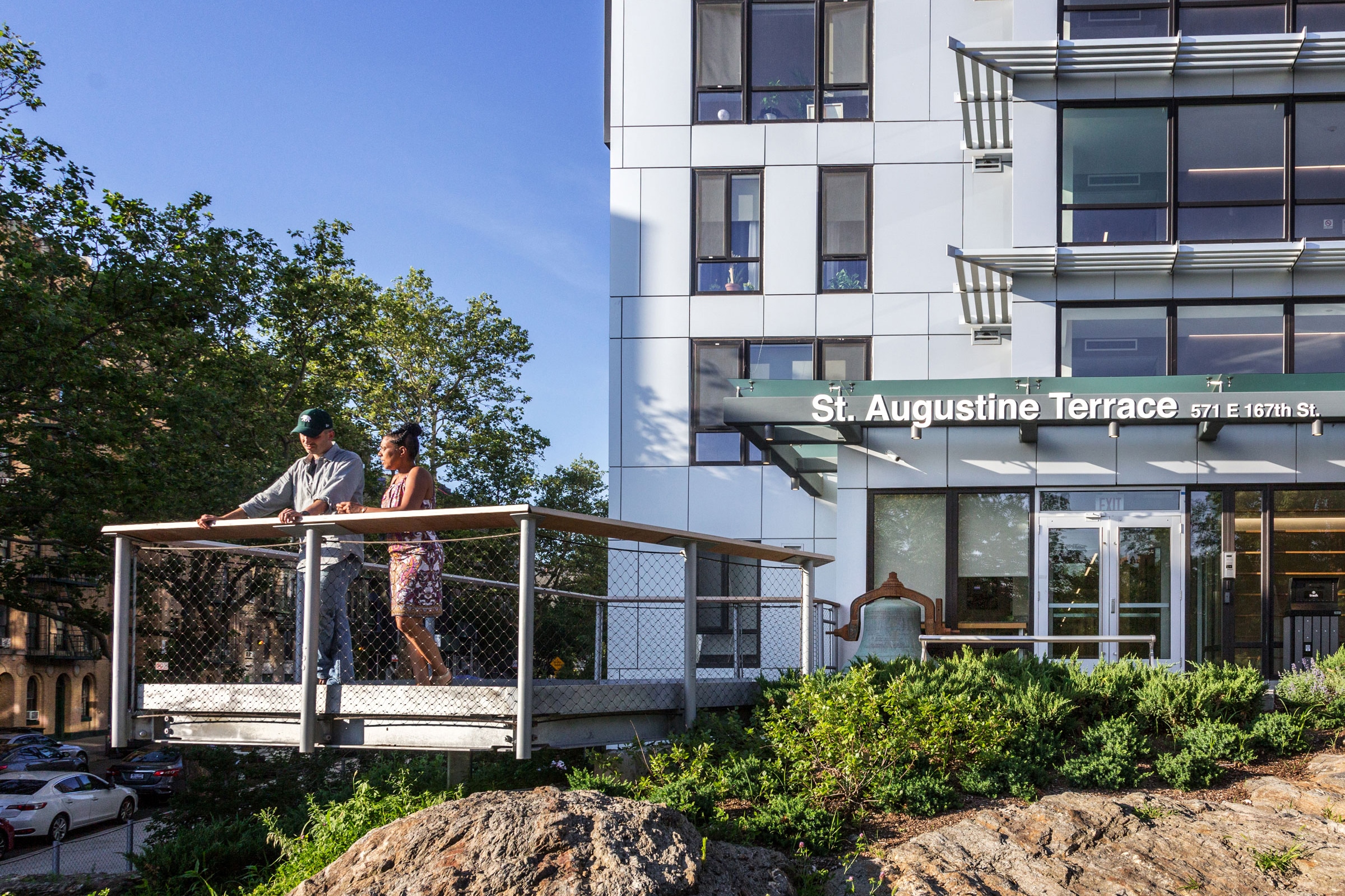
Photo by David Sundberg/Esto
MAP wanted to honor the site, prominently located at the neighborhood’s highest point, so they designed low seating from the church’s iconic rocks and incorporated the steeple’s bell into the front entrance. While rocky terrain makes The Bronx a difficult building location, that made the end result all the more special. “It’s a challenging site, but now we’ve integrated these pieces and all of a sudden they’re at the heart of the project,” says Matt Scheer, director of communications at MAP. “It’s tied into that natural landscape of the community and provides this interesting, natural counterpoint to the building itself, which is very angular.”

Photo by David Sundberg/Esto
Elevator lobbies boast floor-to-ceiling windows. “At night these little lobbies glow and create the effect of a beacon of light,” says Fernando Villa, MAP principal. Every floor has a lookout, which MAP was able to implement because the building offers affordable housing. “Those views in a market-rate development would be sold to the highest bidder,” Simpson says. “In this building everyone benefits from everyday beauty.”
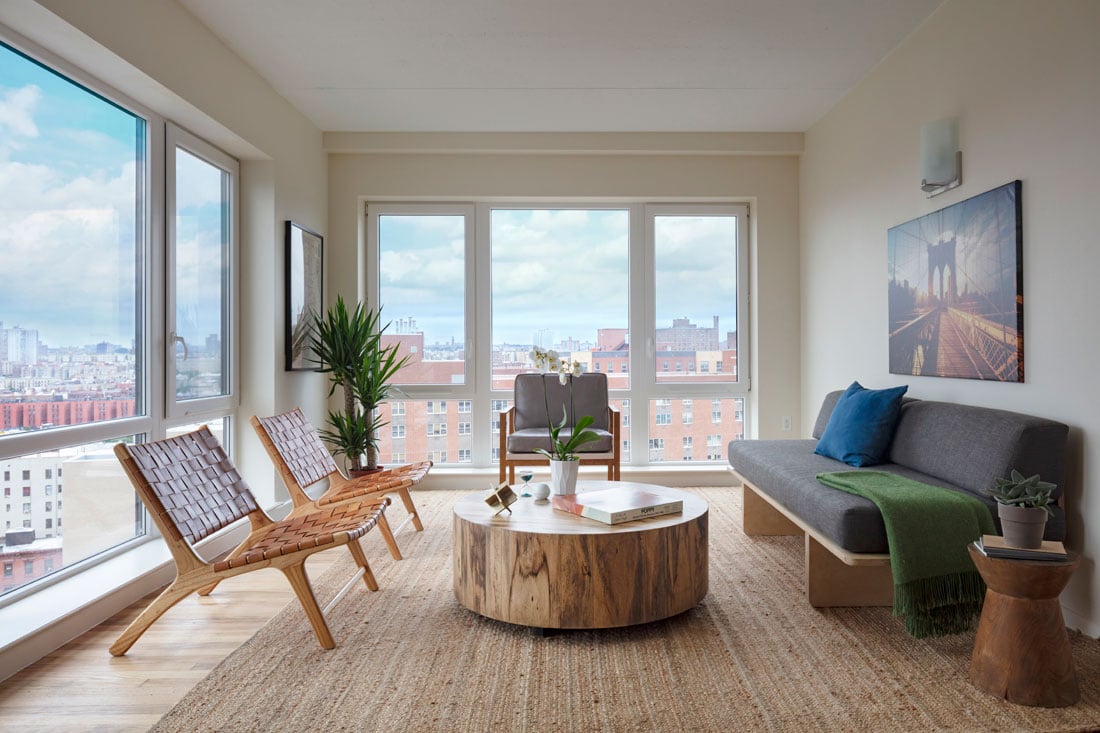
Photo by Ari Burling
Windows throughout the building and in every unit highlight the importance of light in this design. “These big windows open the whole room out onto the city and give you all this beautiful, natural light and make it feel more wide open, light, and airy,” Simpson says. “It’s also highly insulated. There are beautiful views, but it’s still quiet inside.” Residents can appreciate their city while having security and saving energy. The insulated, high-performing windows were just one feature that helped St. Augustine Terrace achieve LEED Gold.
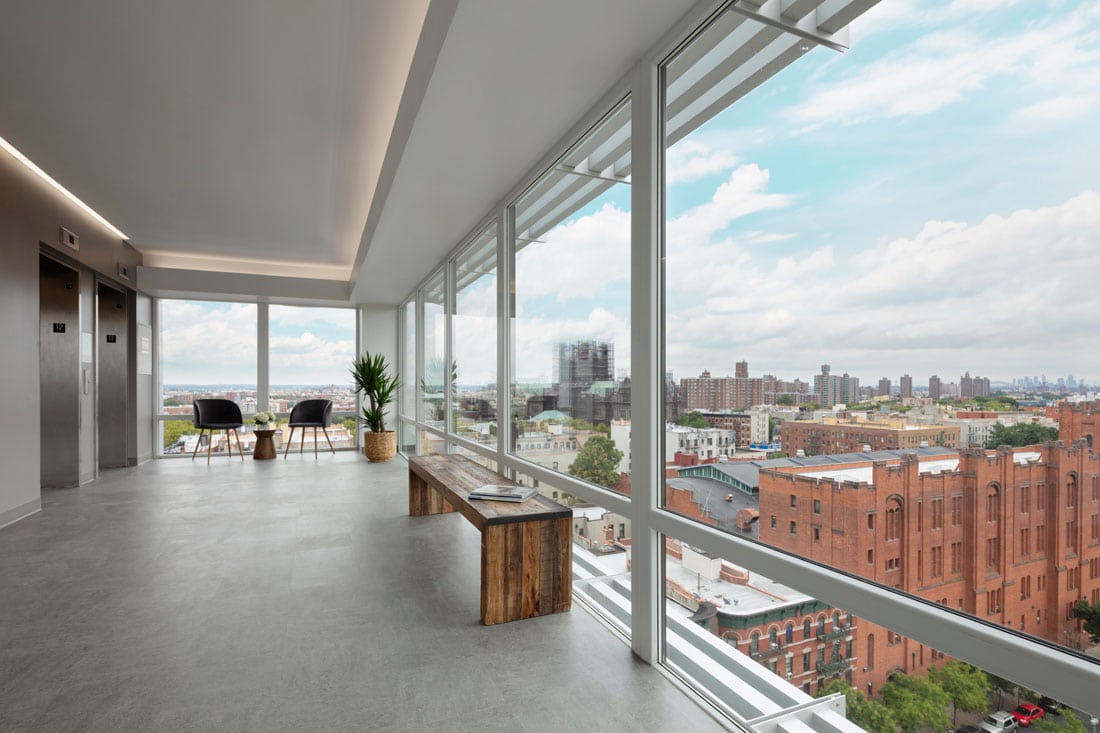
Photo by Ari Burling
Apart from offsetting the house meter (which includes the common area lighting, heating, and cooling), the building’s photovoltaic panels are integral to the design on both the roof and the facade, where they notably cascade down the front of the building. “It’s a way to integrate green features into architecture and design,” Villa says. While they do not offset all of the building’s electrical load, they do make much of what goes on inside it possible. “The photovoltaics are directly powering the beacon of light concept in that sense,” Simpson says.
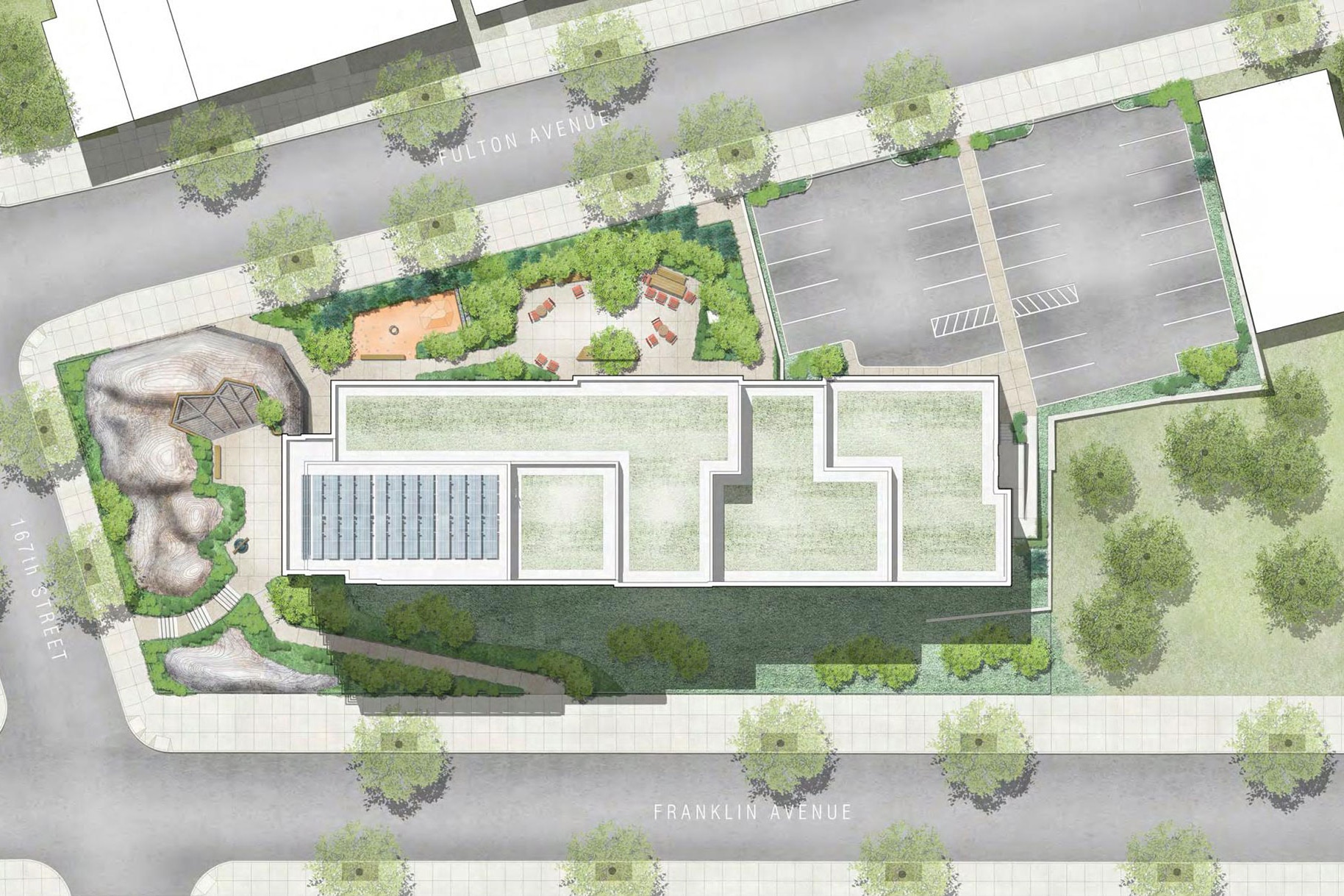
Drawing courtesy of Magnusson Architecture and Planning
Project: St. Augustine Terrace Location: New York City Completion: February 2019 Size: 117,290 square feet Architect: Magnusson Architecture and Planning Landscape Designer: Terrain NYC
